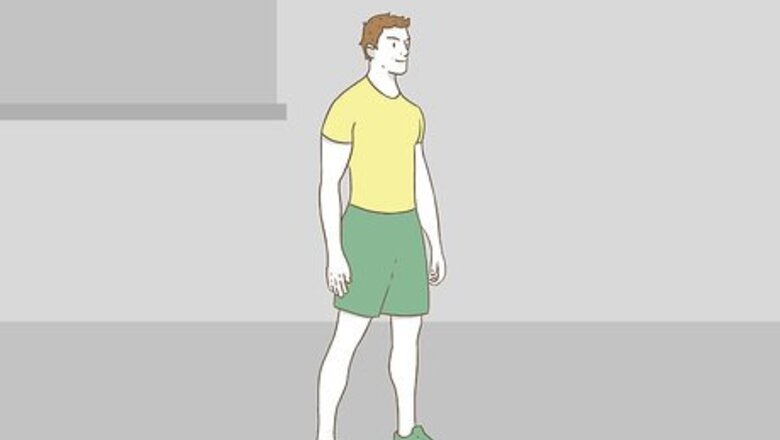
views
Practicing Double Leg Jumps
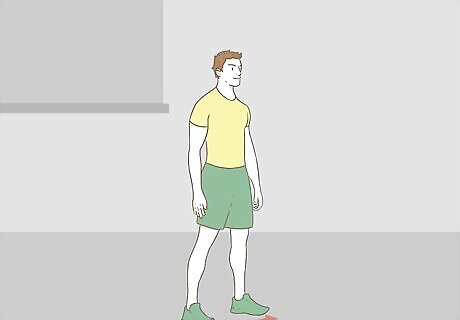
Position your foot. Stand with your feet shoulder-width apart. Your feet should be planted immediately before your jump. Keep the rest of your body relaxed. Be careful that your knees don't point inwards in a "knock knee" or Valgus position. They should be positioned over the second toe.
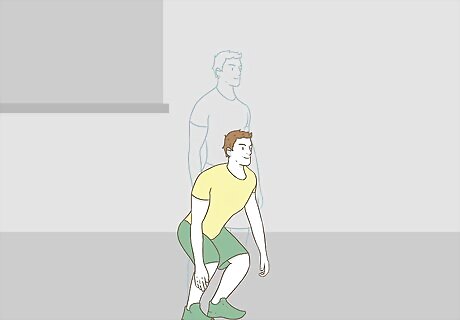
Pay attention to your arms. Let your arms hang loosely at your sides while you crouch into the half-squat. They'll provide a lot of momentum when you jump, so don't keep them in front of you or above you before you jump.
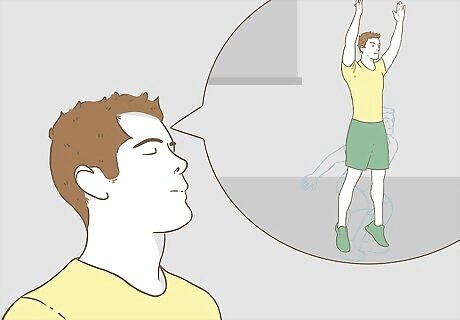
Visualize your jumps. You don't need to spend lots of time meditating on your jumps before doing them, but it helps to visualize the steps you'll take. Visualize the push-off and see yourself leaping in the air toward (or over) your target. You'll be focused on the series of steps and tasks you're about to complete, ensuring a successful jump.
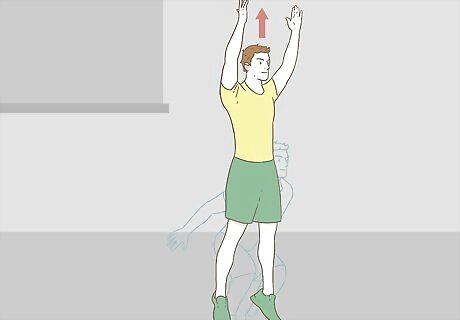
Spring upward into a jump. As soon as you've crouched into a half-squat, immediately spring up into a high jump. Push off from the balls of your feet. Extend your hips, knees, and ankles as far and as quickly as you can.
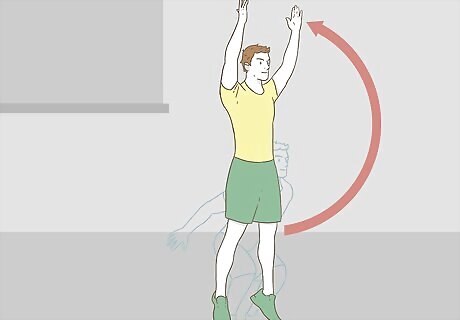
Swing your arms while you jump. Gradually bring your arms behind your back while keeping them at your sides. When you start to jump up, powerfully swing your arms forward and up into the air. This should help propel you up and provide momentum. Exhale when you're doing the motion, like when you lift weights.
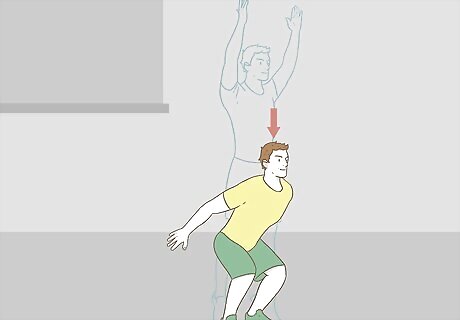
Control your landing. Land on the balls of your feet rather than on your toes. Make sure to land with your knees bent and slightly aligned forward. Both of your legs should equally accept the weight of your landing. This will absorb the shock of hitting the ground and prevent knee injury.
Practicing Single Leg Jumps
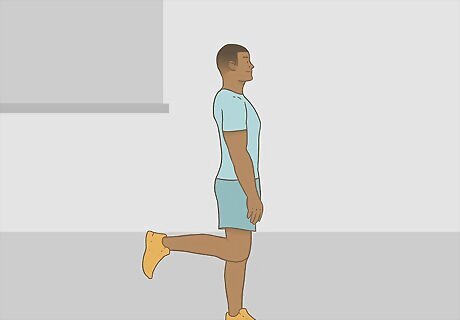
Position your feet. Stand with your feet shoulder-width apart. Bend one leg at the knee and bring it behind you. Keep the rest of your body relaxed.
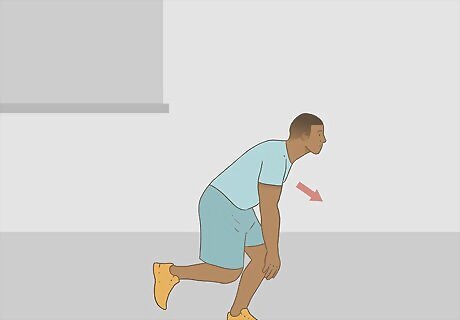
Bend forward slightly. Slowly crouch into a half-squat position on the one foot that is planted. Do this while your torso gradually bends forward. Flex your hips at 30 degrees. Your knees should be bent at 60 degrees and your ankle should be flexed at 25 degrees. This will generate the most power without injuring your knees.
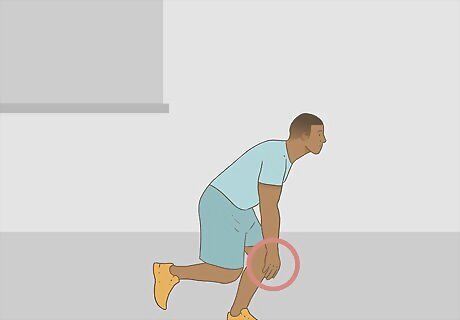
Pay attention to your arms. Let your arms hang loosely at your sides while you crouch into the half-squat. They'll provide a lot of momentum when you jump, so don't keep them in front of you or above you before you jump.
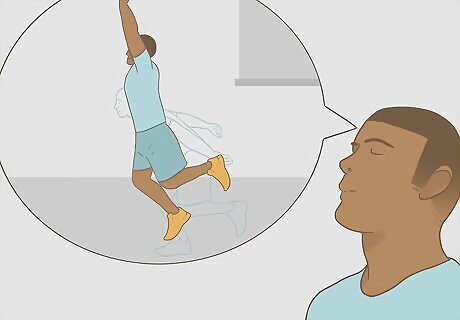
Visualize your jumps. You don't need to spend lots of time meditating on your jumps before doing them, but it helps to visualize the steps you'll take. Visualize the push-off and see yourself leaping in the air toward (or over) your target. You'll be focused on the series of steps and tasks you're about to complete, ensuring a successful jump.
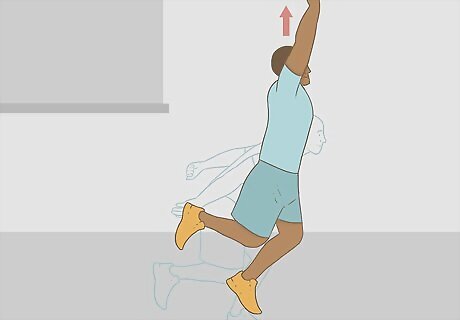
Spring upward into a jump. As soon as you've crouched forward, immediately spring up into a high jump. Push off from the ball of your foot. Extend your hips, knees, and ankles as far and as quickly as you can.
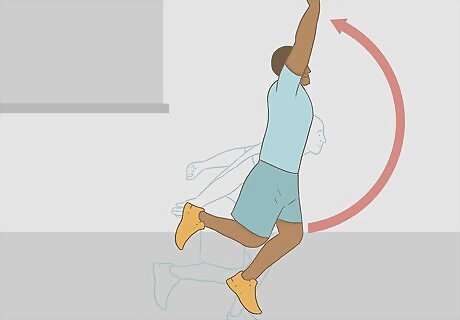
Swing your arms while you jump. Swiftly bring your arms behind your back. When you start to jump up, powerfully swing your arms forward and up into the air. This should help propel you up and provide momentum.
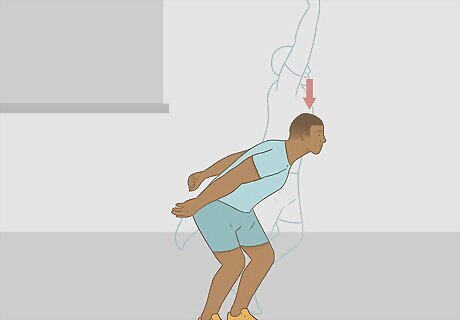
Control your landing. Land on the balls of your feet rather than on your toes. Make sure to land with your knees bent and slightly aligned forward. Both of your legs should equally accept the weight of your landing. This will absorb the shock of hitting the ground and prevent knee injury.
Building Leg Strength
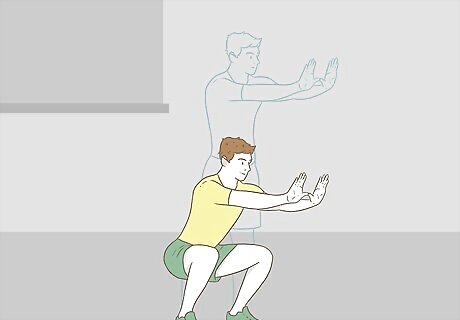
Do squats. To do a squat, simply stand with your back straight, against a wall if you'd like. Your knees should be shoulder-width apart and your legs should be about 18 inches (46 cm) in front of you. Slowly squat by sitting down till you are level with your knees. These exercises develop the hamstrings, glutes, and quads which are the key drivers to helping you jump higher. If you feel pain at any time, stop the exercise.
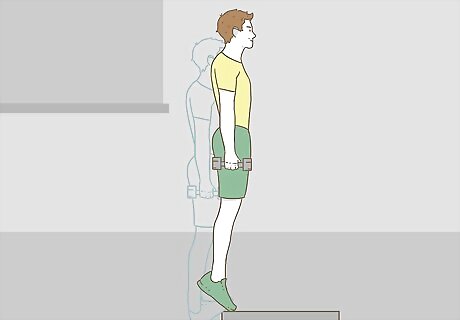
Work out your calves by doing calf raises. Build strength in these muscles by gripping a raised surface with your toes and using your calf muscles to do short dips. You can try doing calf raises with one leg at a time, both legs, or even from a seated position. The calves are another important muscle group in improving your jumping. Try holding some weight while you do this to increase the resistance and build strength.
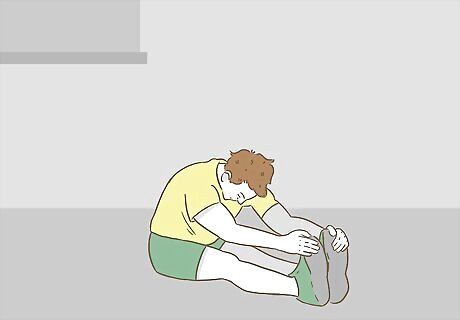
Improve your flexibility by stretching. Stretch your hamstrings and buttocks by laying on your back with one leg crossed over the other at the knee. Pull the lower leg toward you firmly and steadily. This should stretch the hamstring of the crossed leg. For another exercise, touch your toes while seated, standing, with your legs spread, and with your legs crossed. If you're not flexible you'll develop an imbalance of strength. This could limit your ability to jump.
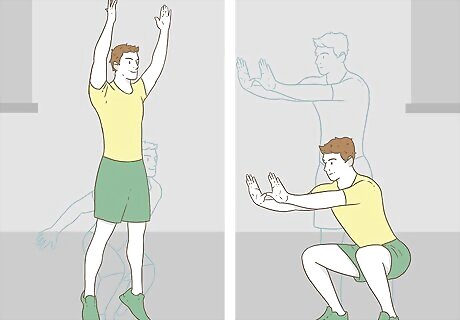
Continue practicing jumps and squats. Jumps, hops, and lunges are known as plyometrics. Plyometrics are high intensity movements which increase your heart rate quickly. Endurance training can actually improve your quick twitch muscle fibers, making jumping more powerful. For a maximum exercise, try holding about one-third of the weight that you normally lift. Jump explosively and repeat it as many times as you can.














Comments
0 comment